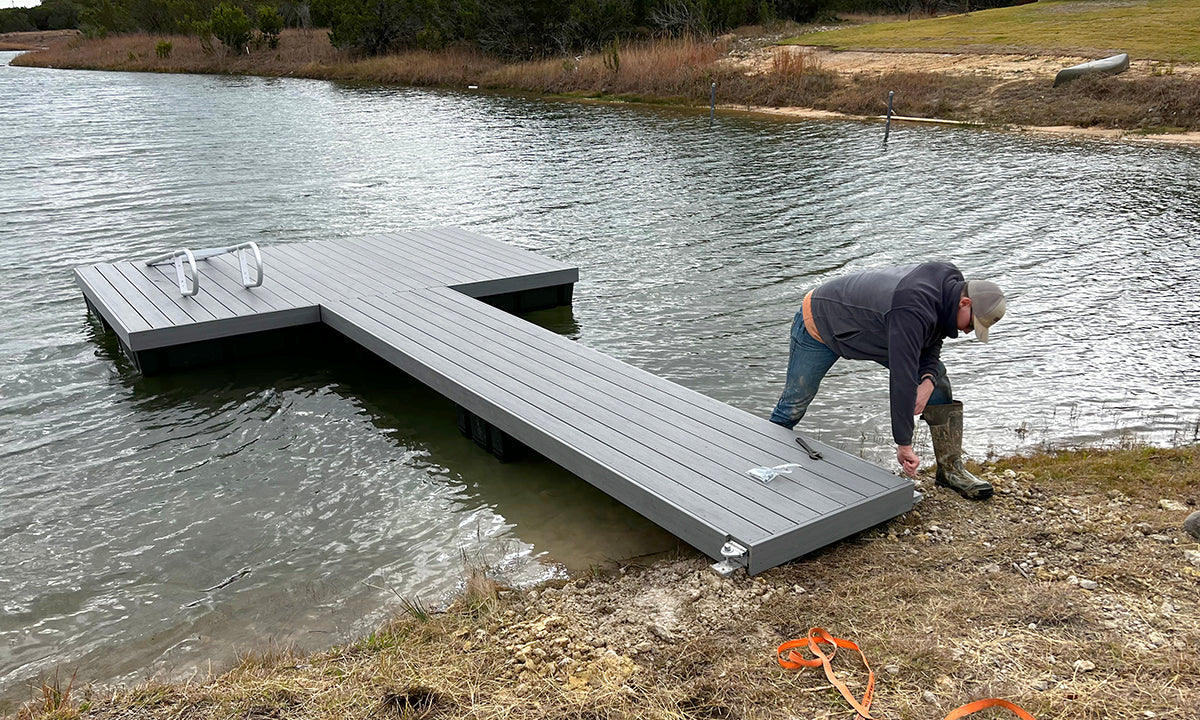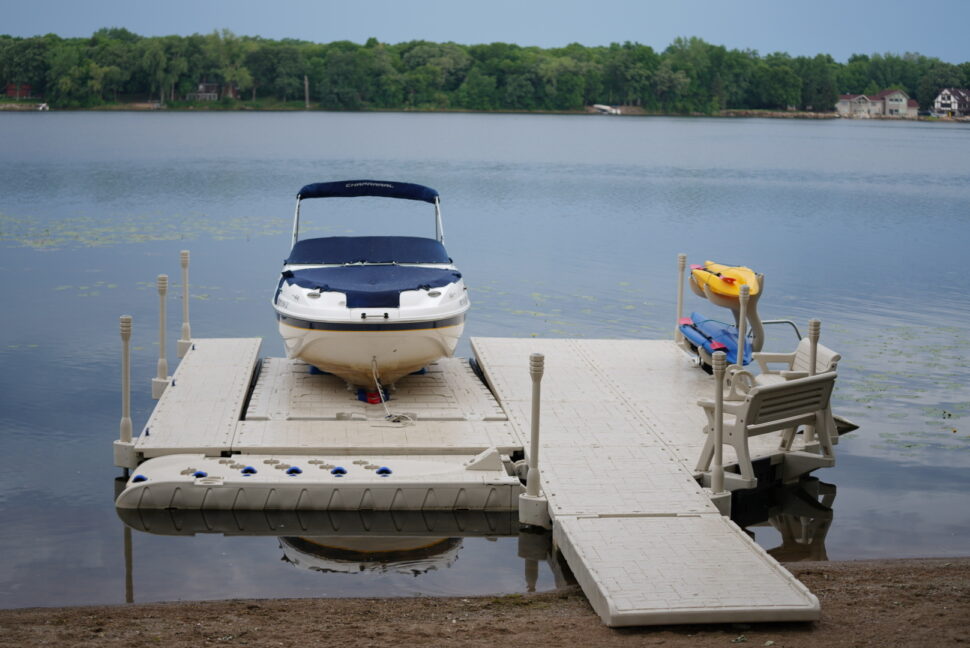Find the Perfect Floating Dock Builder to Bring Your Beachfront Vision to Life
Find the Perfect Floating Dock Builder to Bring Your Beachfront Vision to Life
Blog Article
Create the Perfect Docking Service With Floating Docks
Floating docks present a functional remedy for a variety of maritime demands, adapting flawlessly to varying water levels and diverse vessel types. Their modular nature enables quick installation and relocation, yet the choice of suitable products and layout attributes is essential for making certain both capability and aesthetic appeal. As we explore the necessary components that contribute to the efficiency of floating docks, numerous crucial aspects relating to security and upkeep will arise, raising questions about exactly how to optimize your docking experience. The succeeding discussion will brighten these important considerations.

Advantages of Floating Docks
Floating docks offer countless benefits that make them a suitable option for various maritime applications. Unlike dealt with docks, floating docks surge and fall with the tide, making sure constant accessibility for vessels.
In addition, floating docks are commonly easier and quicker to install contrasted to typical set frameworks. Their modular layout allows for uncomplicated setting up and disassembly, helping with upkeep and relocation when needed. This versatility is specifically valuable for short-term applications or in environments where problems might change.
Floating docks also have a tendency to be a lot more eco-friendly, as they reduce disruption to the seabed and surrounding marine communities. Their buoyant nature lowers the danger of damages to aquatic life, advertising a much healthier setting. These docks can be personalized to suit various vessel dimensions, making certain that they meet particular operational needs.
Eventually, the mix of flexibility, simplicity of installment, and ecological factors to consider makes floating docks a very reliable option for a wide variety of maritime needs.
Selecting the Right Materials
Choosing the proper products for floating docks is important to guarantee longevity, durability, and security. The choice of materials straight affects the dock's efficiency in various environmental problems, consisting of exposure to water, sunshine, and possible wear from marine web traffic.
Typical materials used for floating docks include light weight aluminum, wood, and high-density polyethylene (HDPE) Aluminum is light-weight, corrosion-resistant, and needs very little maintenance, making it an outstanding selection for long life. Nonetheless, its preliminary expense can be greater compared to various other materials.
Wood, while aesthetically appealing and supplying a conventional appearance, can be vulnerable to rot and bug damages if not correctly dealt with. Therefore, utilizing pressure-treated wood or normally resilient species like cedar or redwood can mitigate these problems.
HDPE is a popular option as a result of its resistance to UV rays and chemicals, together with being eco-friendly. floating dock services. It is offered and light-weight in different shades, enabling customization
Inevitably, the best material choice will rely on certain requirements, consisting of spending plan, desired looks, and ecological considerations. Cautious analysis of these factors will bring about a effective and durable floating dock option.
Style Considerations for Stability
When designing floating docks, guaranteeing stability is an essential aspect that can considerably affect their capability and safety. Stability in floating dock layout is influenced by different variables, consisting of buoyancy, weight distribution, and the plan of components.
Weight circulation is essential; equally dispersing lots across the dock stops tilting and improves security. This can be achieved via strategic placement of docking tools, such as fenders and cleats, along with correct spacing of floats. In addition, the dimensions of the dock need to be attentively you could try this out intended. Larger layouts can provide enhanced security, specifically in harsh water problems, while longer docks might require added supports to protect against sagging.
Another crucial consideration is the environmental impact, including wave activity and wind. Including attributes such as sidewalls or skirting can help minimize the effects of ecological forces, preserving stability in unfavorable conditions. Inevitably, a combination of thoughtful style, product choice, and understanding of environmental elements will generate a drifting dock that satisfies both security and security demands.
Installation Tips and Methods

Following, protect the needed permits and stick to local policies, which may dictate installment methods and ecological factors to consider. Engage a qualified professional experienced in floating dock setups if needed. Use top notch products made for aquatic settings to enhance longevity and durability.
When placing the dock, straighten it parallel to the coastline to facilitate simple accessibility. Make certain that the anchoring system is robust, employing concrete blocks or helical supports to stabilize the dock versus wind and wave activity. It's vital to account for seasonal water level variations, including prospective ice motion in cooler climates.
During the setup, ascertain the dock's floatation and stability prior to completing the anchoring. Regularly inspect the installation for any type of indications of wear or damage. By following these tips and techniques, you can accomplish a safe and secure, practical, and cosmetically pleasing floating dock setup that fulfills your requirements.
Maintenance and Care Standards
Caring and maintaining for floating docks is vital to lengthening their lifespan and making certain safe use. Normal assessments need to be performed to recognize any signs of wear, damages, or marine development. Seek splits, loose fittings, or stained areas on the dock's surface, as these problems can jeopardize architectural stability.
Cleaning up is important. Use a pressure washing machine to get rid of algae, barnacles, and debris, which can gather over time. For persistent development, take into consideration eco-friendly cleaning representatives that won't hurt aquatic life.
In addition, check the mooring lines and anchors frequently to guarantee they are free and safe from deterioration. Change any torn or damaged lines without delay to maintain security.
Throughout extreme climate, such as storms or freezing problems, take precautionary actions. Safeguard the dock with added mooring lines and, if practical, remove any type of removable parts to avoid damages.
Final Thought
In final thought, the application of floating docks presents a versatile and reliable docking solution appropriate for numerous maritime applications. Their versatility to changing water degrees, integrated with a modular design, allows for very easy customization and moving. Selecting ideal products improves both toughness and aesthetic allure, while my sources mindful consideration of security ensures safety and long life. With correct installment and routine upkeep, floating docks can visit homepage give dependable and effective docking experiences for a vast array of vessels.
As we discover the vital elements that contribute to the efficiency of floating docks, several vital variables pertaining to stability and maintenance will certainly arise, elevating inquiries regarding exactly how to optimize your docking experience. Unlike repaired docks, floating docks increase and loss with the trend, guaranteeing consistent availability for vessels.When making floating docks, making sure stability is a basic element that can significantly impact their capability and safety. Security in floating dock style is affected by different variables, including buoyancy, weight circulation, and the arrangement of elements. Inevitably, a combination of thoughtful layout, material choice, and understanding of environmental aspects will produce a floating dock that fulfills both stability and security demands.
Report this page